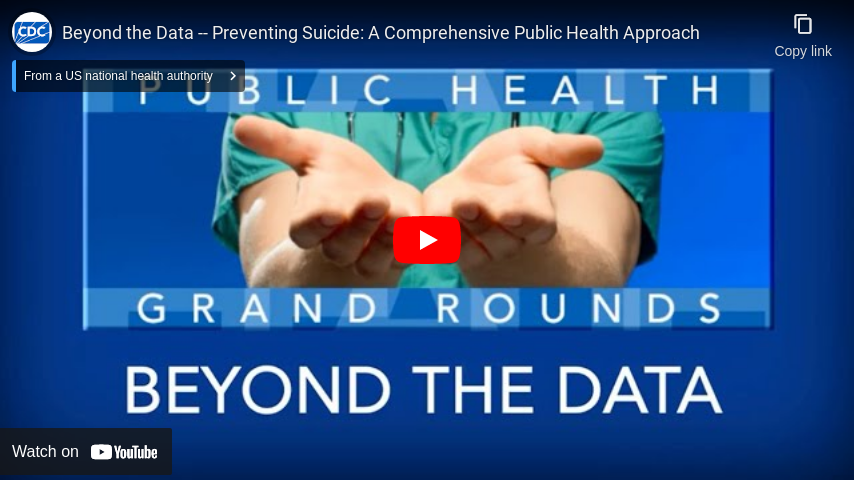Preventing Suicide: A Comprehensive Public Health Approach
Presented on .
Suicide is preventable and is a significant public health issue. In 2013, there were over 41,000 suicides in the United States – an average of 113 each day. Each suicide takes a substantial toll on individuals, families and communities. The medical costs and lost wages associated with suicide are estimated to be $51 billion per year. These numbers underestimate the severity of the problem. In 2013, over 494,000 people were treated in US emergency departments for self-inflected injuries. In addition, many more people struggle with thoughts of suicide. For every one suicide, there were over 229 adults who seriously considered suicide.
The risk for suicidal behavior is complex. People of all genders, ages, and ethnicities can be at risk for suicide but some groups are at higher risk than others. Men are about four times more likely than women to die from suicide. However, women are more likely to express suicidal thoughts and to make nonfatal attempts than men. In the past, suicide was addressed by providing mental health services to people who were already experiencing or showing signs of suicidal thoughts or behavior. While such services are critical, preventing suicide at a national level will require approaches that go beyond mental health issues to address broader family, community, and societal issues.
Please join us for this session of Grand Rounds as we discuss the strategies needed to promote broader awareness of suicide and the role that public health can play in identifying factors that reduce the risk of suicide, and in promoting actions and programs that protect people from engaging in suicidal behavior.
Dr. John Iskander and Dr. Alex Crosby discuss some of the trends in suicide and explore some of the ways public health can impact prevention. Suicide is preventable and there are strategies that have been shown to be effective:
Clinicians must:
- Seek and utilize available resources and information and
- Better identify patients who may be at risk for suicidal behavior
Businesses, institutions and community organizations can:
- Strengthen protective factors by encouraging social connection,
- Train individuals to recognize and refer individuals at risk and
- Adopt strategies from the National Action Alliance for Suicide Prevention
Public Health should:
- Continue to improve surveillance efforts and
- Conduct more rigorous evaluation on programs and their outcomes
- Alex E. Crosby, MD, MPH
- Chief, Surveillance Branch, Division of Violence Prevention
National Center for Injury Prevention and Control, CDC
- Eric D. Caine, MD
- Professor and Chair, Department of Psychiatry
University of Rochester Medical Center
- Jarrod Hindman, MS
- Violence and Suicide Prevention Section Manager, Prevention Services Division
Colorado Department of Public Health and Environment
- Jerry Reed, PhD, MSW
- Director
Suicide Prevention Resource Center
- John Iskander, MD, MPH
- Scientific Director
- Phoebe Thorpe, MD, MPH
- Deputy Scientific Director
- Susan Laird, MSN, RN
- Communications Director
Get notified about the latest updates from Public Health Grand Rounds right in your inbox by setting up an alert today!
Get notified about the latest updates from Public Health Grand Rounds right in your inbox by setting up an alert today!Sign Up
Get notified about the latest updates from Public Health Grand Rounds right in your inbox by setting up an alert today!


